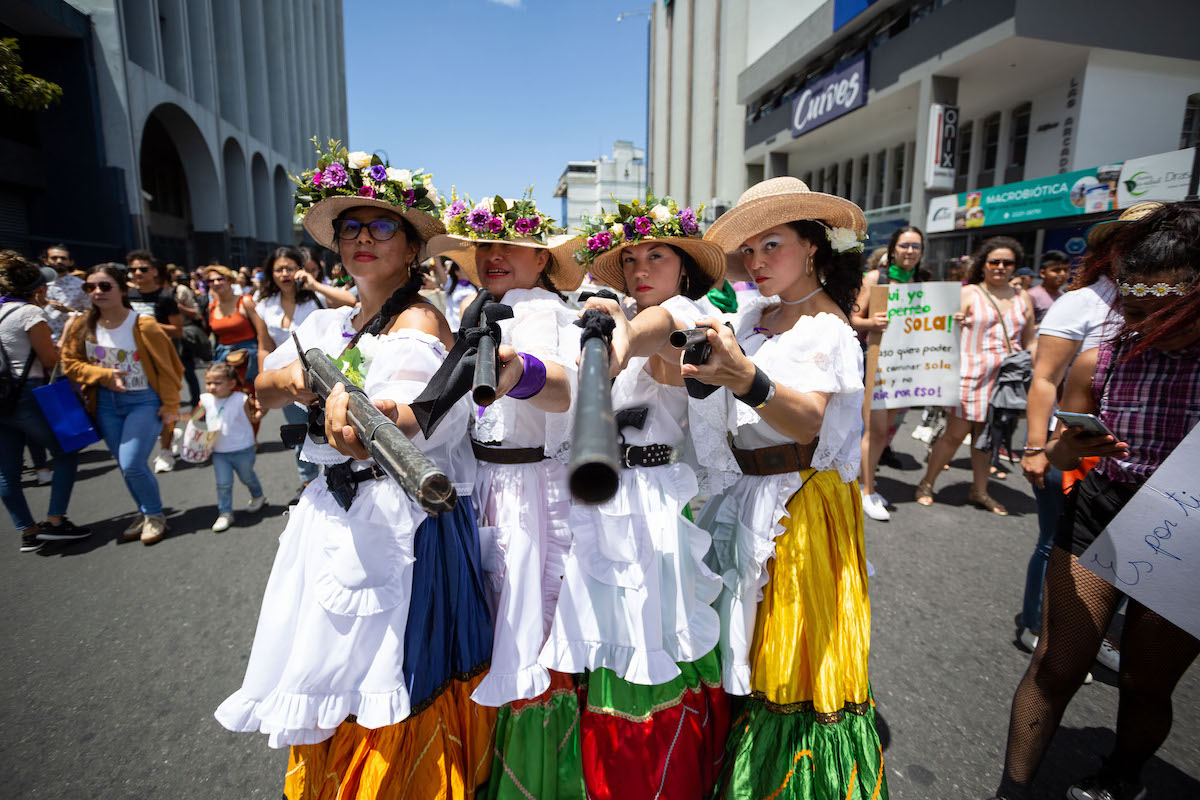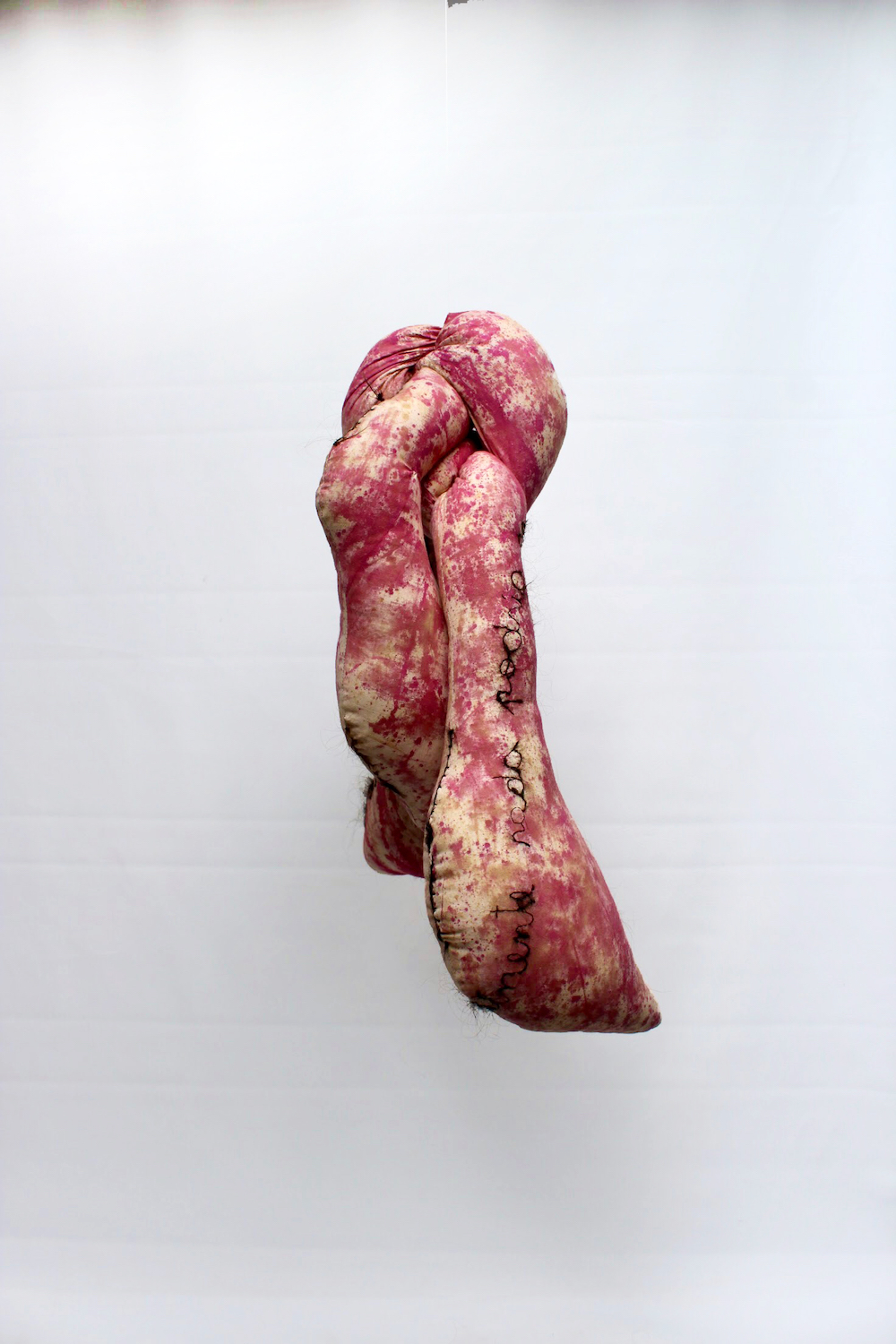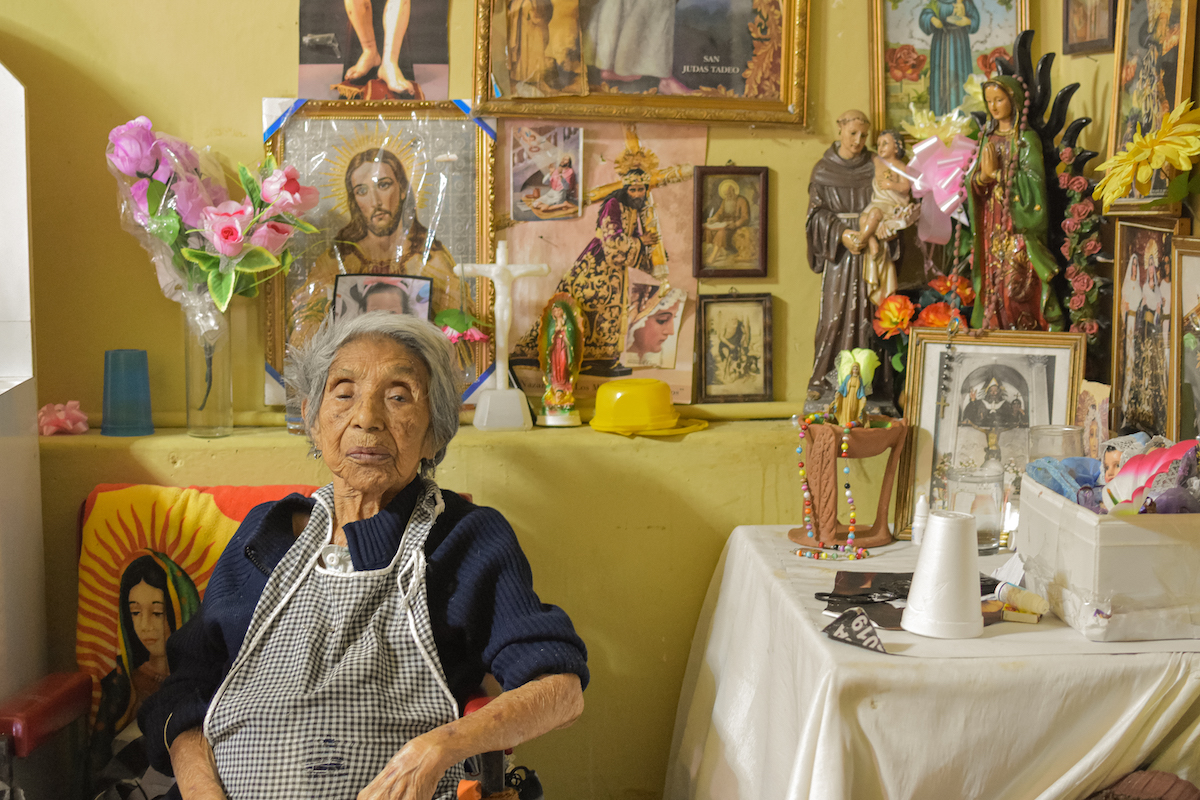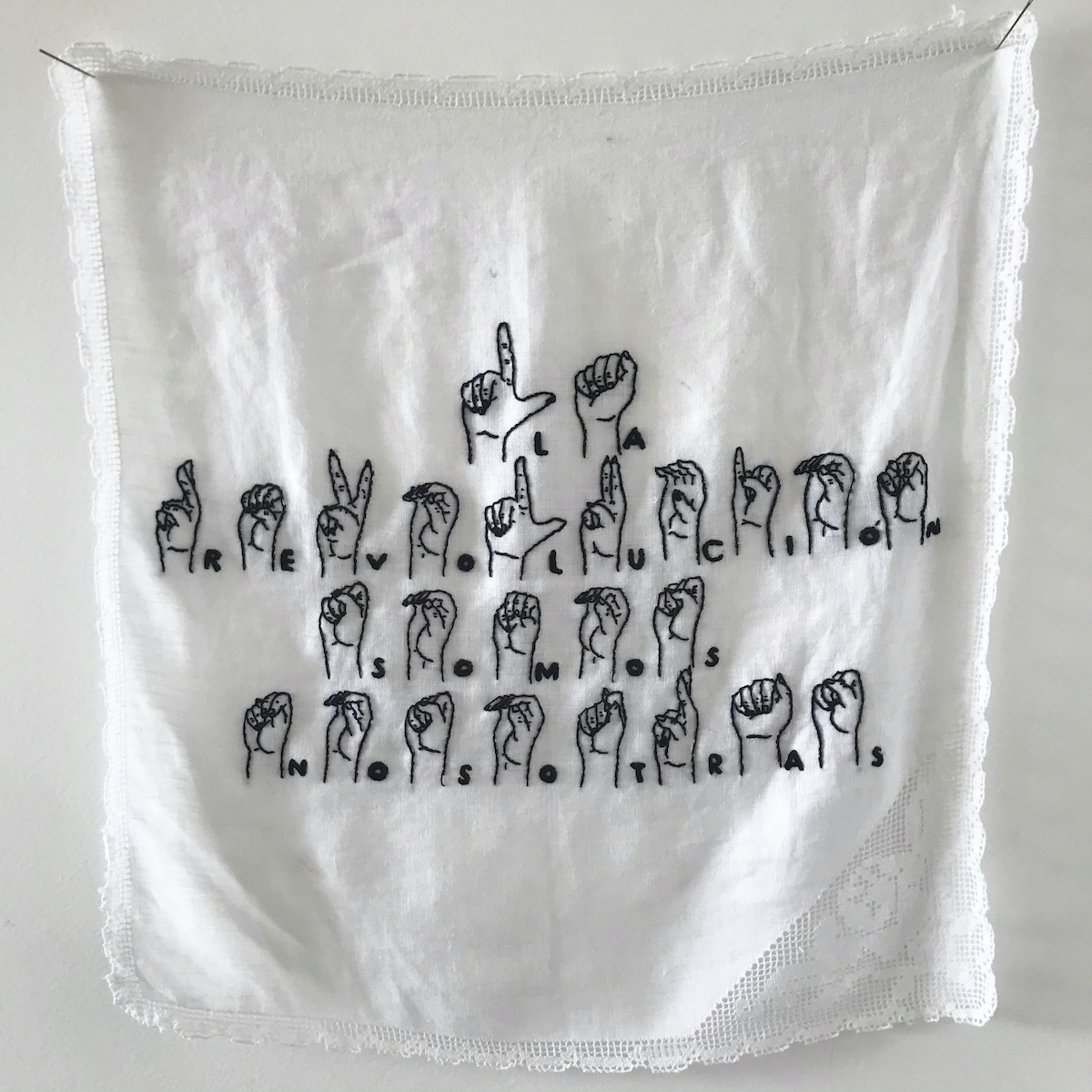Recontarnos (Rewriting Us) is a multidisciplinary exhibition of work by Central American women artists that highlights and entwines the experiences, perspectives, and shared resilience of women in this region. The project is a way of owning our own portrayal through exercising creative autonomy within our storytelling, thoughts, and feelings, which are expressed through sorority, tenderness, and care; thus the title Rewriting Us. This is the first Central American exhibition that features all women artists, and is curated by an all-female and feminist curatorial collective using curaduría comunitaria.1
The dialogue between the selected artworks threads together acts of resistance with depictions of daily life, violence and loss, interpretations of feminisms and the female body, youth and old age, and desired and undesired motherhood, among other topics. Together, they weave our coexistence into the diverse fabric of female identity across the region.
The result is a political statement that depends upon and fosters abundant discussions, generating an active conversation between the multiple perspectives and experiences displayed in the exhibition space. We riot by rewriting our own narratives, for we are not merely seeking inclusion, but a conscious transformation of the structures and processes that depict women's perspectives and experiences.
Central American women learn, from a very young age, the concepts of "harassment," "sexism," "violence," "abuse," and "femicide." These words haunt women as we grow up; they crush and deplete us every day. Artists display their personal experiences through exposing and creating a record of the routine threats that permeate daily life. lía vallejo, a Nicaraguan artist, offers a "cure" for sexual harassment by handing out business cards to men who are behaving inappropriately in public spaces. The cards identify the men's actions as harassment, and redirect them to call a number for help.

This exhibition highlights the other forms of violence that women are subjected to in everyday exchanges, both public and private. María Adela Díaz, a Guatemalan artist, makes visible the increase in acts of violence against women, children, and transgender people during the pandemic through a video performance that demonstrates how indifference suffocates. In her crude presentation, she deprives herself of oxygen by placing rice paper over her face, embodying the suffering that many people felt during the pandemic. Djassminn Morales and Elda Figueroa expand upon this issue by referencing the 2017 arson that took place in a Guatemalan foster home as a result of governmental negligence. This uncontrolled fire caused the deaths of 41 girls, and physical and psychological trauma to 15 survivors. All had been locked in a small room as a punishment for "bad behavior," and therefore could not escape. The artists draw an analogy between this tragedy and the experience of pandemic confinement among women who suffer domestic abuse. The artists ask women to anonymously describe the aggressions they endured in the pandemic, which are then read aloud. The resulting media generates discomforting reflections about what it means to be a woman born in Guatemala.

From another angle, Emma Segura Calderón, a Costa Rican artist, narrates her existence through suspended soft sculptures that represent trans-feminist tools of resistance against the privileged status of heterosexuality and cisgender experience. Emma questions hegemonic contradictions; by embroidering her own hair and applying natural dyes to these forms, she defies asymmetrical fictions ascribed to the naturalness of the flesh as a form of corporeal and identity control. Also from Costa Rica, Colectivo Las Hartas presents documentation of an action that took place on International Women's Day in 2020 in Costa Rica. Wearing traditional dresses and brandishing weapons typically used only by men, they occupy public space as an ally. With this they show that women are powerful, and how anger, love, fear, and resistance motivates them to take action and fill the streets with their energy.

Exhibitions featuring works by women artists have long been curated by men. Such projects typically portray femininity, the female body, and female creators in a particular way that denies the work's academic value—a result of paternalism, sexism, and classism and its whiteness. From this historical erasure, Costa Rican artist Melissa Valverde Gamboa explores how the construction of gender within our familial spaces is embroidered in our memories, and applies this concept upon a common domestic item: the tea bag. Melissa's handmade piece contains writings, images, and visions addressing the roles ascribed to women in the family unit; how such roles influence the way women are perceived; and who they really are.
Introducing a documentary perspective, Fernanda Alvarado, a Guatemalan artist, shares a photographic record of women protesters during International Women's Day events. Throughout her beloved country, they converge in struggle and resistance to fight for women's rights: united by rage but also by tenderness and sorority. In Guatemala—a geographical bridge that constitutes the union of two Americas—women's autonomy and agency have long been overlooked in both politics and history. Fernanda's photographs are shown alongside audio interventions from protestors, viscerally connecting viewers to Guatemalan women's experiences, transporting them to spaces of resistance.

The representation of feminist struggles, identity crises, and anti-colonialist uprisings in Central American countries are also depicted in this exhibition. Panamanian artist, Momo Magallón documents her performance wherein she lies hidden under a United States flag in different public spaces: alluding to how the history of the Panama Canal—and its vast economic, human, ecological tolls—has been obfuscated by U.S. interests.
By using the verb "rewrite" in the exhibition, we are not only questioning the ways in which the past challenges us, but also how our bodies react to it. The Salvadoran artist, Ana Elizabeth López, ponders the connotations between estranged family members and physical features inherited from them, in a collage including photographs of the artist and her father. Ana Lucía Galicia, a Guatemalan artist, invites us to witness how Margarita, her grandmother, flourishes and finds new ways of communicating in her old age. Both artists' photographic works evoke memory and reveal how the bodies of the artists are "rewritten" from their pasts.

More than an aesthetic process, we understand art as a social happening: an opportunity to position ourselves from our own bodies, our territories, and the events, traumas, thoughts, emotions, and histories that happen to or pass through us. renat castillo, a Nicaraguan artist, narrates how pandemic confinement affected the emergent relationship between their body, food, and land, allowing the artist to understand themselves beyond their physicality and environment. Lucy Argueta, a Honduran artist, demonstrates the relationship between waste and fashion through video documentation. Incorporating both investigatory and affective approaches, Lucy questions the value that is given to clothing according to its origin, and the cycles of waste that propel commerce.

Far from having a singular topic, the exhibition is rhizomatic, encompassing stories, interests, and experiences from all the different bodies and territories we inhabit. That is why artists speak through their varying points of resistance and struggle within the public space. Bodily experiences represent an important theme within the exhibition, because in Latin America the body is considered our first territory. It's the space that we inhabit, and through it one can come to understand the intimacies, maternity, stereotypes and gender roles, class conditions, privileges and contexts of Central American women.
María Fernanda Carlos, a Guatemalan artist, presents concepts of desired maternity with the use of video and installation. Exploring a concept of maternity that is built from a collective memory, she proposes that our existence is related to that of the women and men who came before us. At the same time, Susana Sánchez Carballo, a Costa Rican artist, asks us to reflect upon the desire to remain without children, and to be able to communicate it without fear of stigma, since motherhood should not be the only option available to women.
These artists do not create for the benefit of any patriarchal, vertical or misogynistic institution, or the art world. We transform the structures and processes that depict us by rewriting our own narratives, through our voices, bodies, and eyes. Francela Carrera, a Guatemalan artist, claims embroidery as the space where, historically, women have made their voices heard, sharing their knowledge to build stories because, as her work affirms, "We are the revolution."
Katheryn Patá and Lisa de León, both Guatemalan artists, present an immersive installation that incorporates the voices of their mothers and grandmothers discussing what they associate with walking alone at night. These conversations create a soundscape that reveals the fears that encircle generations of Central American women, as the result of increasing disappearances and kidnappings that target women. The Chinese/Taiwanese-Costa Rican group, Colectivo Hapa documents the preparation of a "Special Homemade Meal" through which they question the meanings of "home," "special," and "meal." They do this by examining the burdens placed upon women and feminized bodies who exist at the intersection of the Chinese and Costa Rican culture--something the collective members know well from their experiences as first generation immigrants. Their video work satirizes these impositions with a feminist point of view using Chinese food aesthetics, which became popular in Costa Rica in the 1980s.
Rewriting Us serves as a window into Central American women's lives, fears, priorities, and perspectives, revealing through imagery, sounds, and dialogues what it means to be a woman in this region. At the same time, the works on view are likely to resonate with every woman who visits. They evoke familiar memories and collective experiences, recreating the nostalgic sensation of being held by a friend.
La Revuelta (Maya Juracán, Renata Alvarez, Jimena Galán Dary, and Christa Krings)
Open Call Exhibition
© apexart 2022
1. Curaduría comunitaria is a curatorial exercise that generates content through equal discussions among activists, community leaders and theorists, resulting in collective narratives that impact the cultural, social and political environment.

